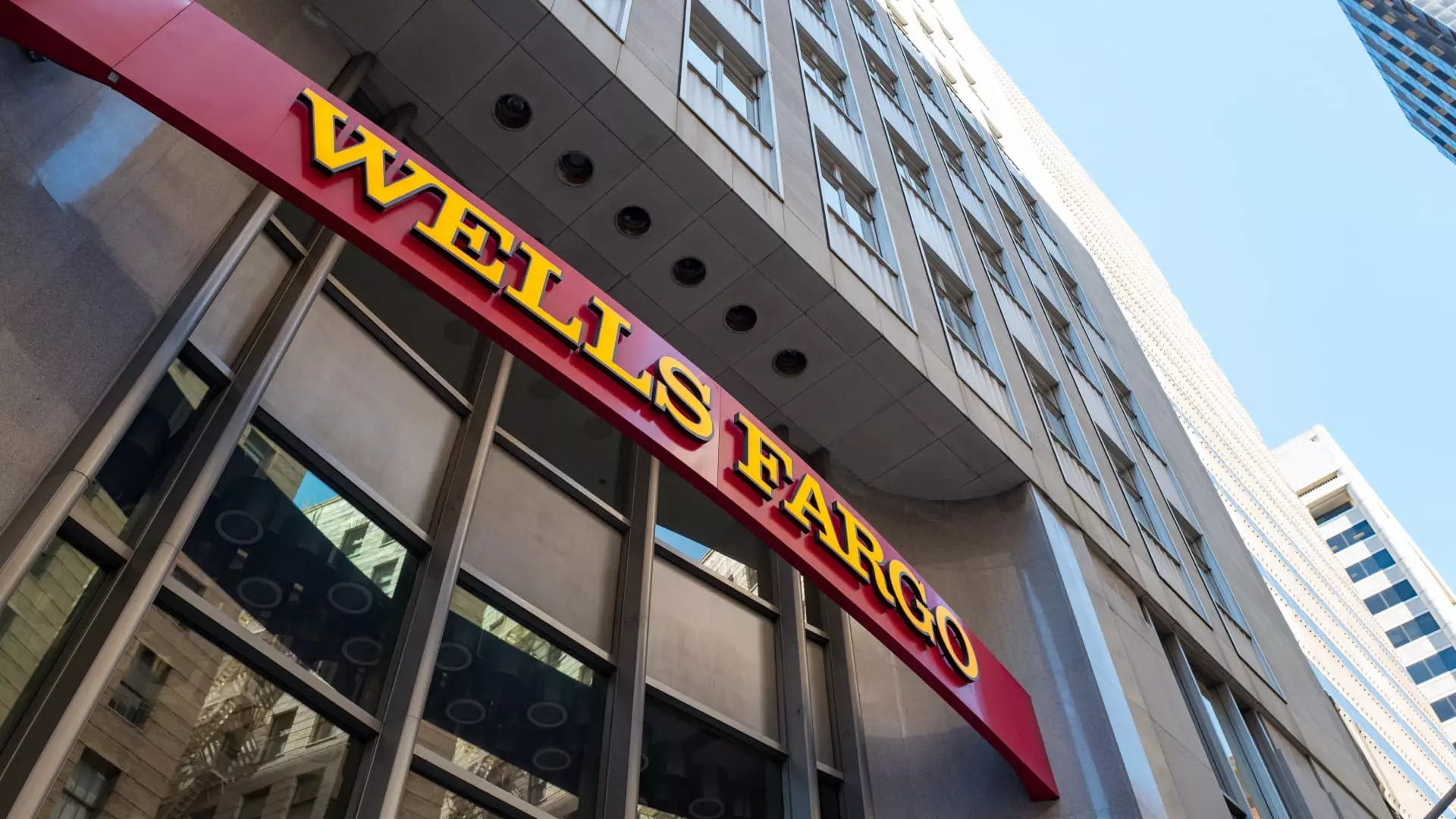Wells Fargo’s recent earnings announcement has brought renewed optimism among investors and industry analysts alike. Following the release of its fourth-quarter results, the bank’s share price experienced a notable uptick, signaling confidence in its future prospects. Let’s delve into the finer details of this financial report and analyze what it means for Wells Fargo moving forward.
In the latest report, Wells Fargo revealed a slight year-over-year decline in total revenue for the quarter, which fell by 0.5% to $20.38 billion. This figure missed analysts’ expectations, which anticipated revenue to hit approximately $20.59 billion. However, the adjusted earnings per share (EPS) of $1.58 not only surpassed the consensus estimate of $1.35 but also indicated that the bank is navigating challenging waters with some resilience.
The generally accepted accounting principles (GAAP) EPS came in at $1.43 per share, inclusive of several one-time items that skewed the assessment. These figures indicate that while revenue growth remains a challenge, Wells Fargo is managing to juggle its expenses effectively, thereby ensuring profit margins hold steady.
While the numbers seemed mixed at first glance, it was Wells Fargo’s optimistic guidance for 2025 that captured the attention of investors. The bank anticipates that net interest income (NII) should increase by 1% to 3%, presenting a more favorable outlook than analysts had expected. This predicted growth suggests that Wells Fargo is poised to rebound from challenges faced in recent years, particularly those related to profit generation.
Moreover, the bank’s acknowledgment of expenses potentially declining from $54.6 billion to around $54.2 billion in 2025 added another layer of positivity. This anticipated reduction in costs, coupled with increased revenues, could lead to a healthier balance sheet and more robust profit generation moving forward.
CEO Charlie Scharf’s leadership has been a cornerstone in Wells Fargo’s revitalization efforts since taking the helm. His commitment to restructuring the bank’s cost framework and enhancing its risk management systems has yielded tangible results over the past year. Under his stewardship, Wells Fargo has endeavored to diversify its revenue streams away from reliance on net interest income, aiming for a sustainable return on tangible common equity (ROTCE) of 15%.
Recently reported ROTCE figures of 13.4% for 2024 demonstrate promising progress, suggesting that Wells Fargo’s long-term strategic road map is yielding the desired outcomes. Effectively managing costs while focusing on areas of growth allows Wells Fargo to cultivate a sense of stability in an otherwise volatile sector.
The bank’s recent performance indicates that while its NII figures dropped by 7% year-over-year, the overall financial picture isn’t bleak. Notably, non-interest income saw a commendable uptick, soaring by 10% to reach $8.4 billion. Despite failing to meet estimates, this figure suggests resilience in fee-generating areas such as investment advisory and brokerage services.
Scharf’s strategic expansion of Wells Fargo’s investment banking operations amid federal restrictions has proven beneficial, and the potential lifting of these constraints could open new avenues for growth. Enhanced investment banking capabilities could allow Wells Fargo to capitalize on increasing deal activity, especially if regulatory pressures ease under a different administration.
Wells Fargo’s management has set a course that appears committed to setting the bank back on a growth trajectory. Factors such as expected interest rate cuts and their implications for net interest income could create favorable conditions for the bank in the coming year. Additionally, operational efficiencies and investments in technology, though initially seeming burdensome, are likely to pay dividends in the long run.
The anticipation surrounding a likely regulatory shift regarding the bank’s asset cap further complicates the outlook but also presents an opportunity for Wells Fargo to demonstrate its evolving business model. Should these restrictions ease, the bank’s capacity for expansion could significantly increase, providing a boost to its revenues.
As Wells Fargo navigates through a complex financial landscape, the results from the recent quarter and the optimistic outlook for the future signify a noteworthy step in its ongoing transformation. While it can’t be overlooked that challenges remain, the strides made under leadership aimed at turning the bank’s fortunes around provide a glimmer of hope.
Investors seem to be buying into this positive narrative, and as the bank continues executing its strategic initiatives, there’s potential for Wells Fargo to reclaim its footing in the competitive banking industry. If this resilience holds, Wells Fargo could very well emerge as a prominent player in the market once more, transforming from its erstwhile controversies into a symbol of banking revival.

